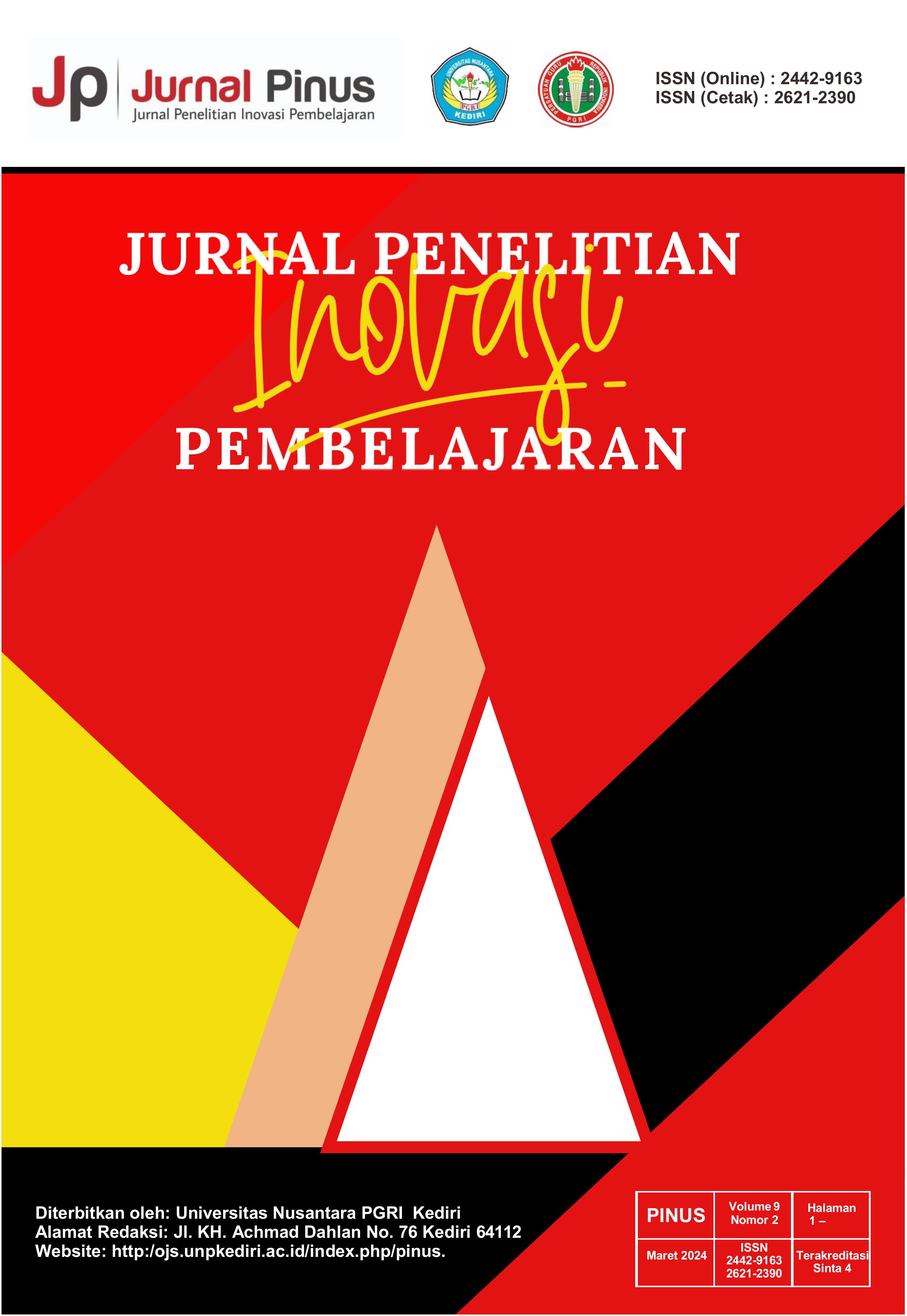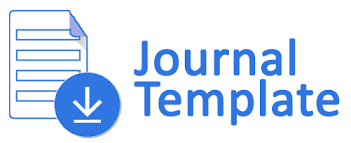Contribution of Canva For Education In Enhancing Students' Creativity and Presentation Skills
DOI:
https://doi.org/10.29407/pn.v9i2.21839Keywords:
Canva for Education, Creativity, Presentation SkillsAbstract
This article discusses the role of Canva For Education in enhancing the creativity and presentation skills of students at Universitas Negeri Malang. Faced with the challenges of the global job market, the university recognizes the potential of Canva For Education as an innovative solution with features such as visual design, team collaboration, and multimedia integration. Despite implementation challenges such as integrating technology into the curriculum and data security issues, Canva For Education can provide a positive contribution to the development of students' skills. Literature reviews indicate that this platform can boost creativity through appealing visual designs, team collaboration, and the utilization of learning resources. Furthermore, Canva For Education can advance presentation skills through attractive slide designs, effective use of visualization, and consistent content design. The article concludes by affirming that Canva For Education is a valuable tool in preparing students for the demands of the increasingly visually-oriented global job market
Downloads
References
Anwar, Y., Idrus, S., & Siahaan, J. (2019). Implementasi metode presentasi pada tahap pra laboratorium untuk meningkatkan kemampuan menulis dan sikap mahasiswa terhadap kimia. Jurnal Inovasi Pendidikan Ipa, 5(2). https://doi.org/10.21831/jipi.v5i2.24053
Churiyah, M., Basuki, A., Dharma, B., Filianti, F., & Sakdiyyah, D. (2022). Canva for education as a learning tool for center of excellence vocational school (smk pusat keunggulan) program to prepare competitive graduates in the field of creative skills in the digital age. International Journal of Community Service & Engagement, 3(1), 34-42. https://doi.org/10.47747/ijcse.v3i1.573
Dianti, I., Handoko, A., & Netriwati, N. (2020). Penerapan model conceptual understanding procedures disertai mind mapping terhadap pemahaman konsep ditinjau dari kreativitas belajar. Quagga Jurnal Pendidikan Dan Biologi, 12(1), 85. https://doi.org/10.25134/quagga.v12i1.2102
Fadhli, M. (2017). Manajemen peningkatan mutu pendidikan. Tadbir Jurnal Studi Manajemen Pendidikan, 1(2), 215. https://doi.org/10.29240/jsmp.v1i2.295
Fahrudin, A. and Pamungkas, A. (2022). Peningkatan kompetensi guru melalui pelatihan keterampilan pembuatan e-presentation dengan aplikasi canva for education. Jurnal Pengabdian Kepada Masyarakat Bangun Cipta Rasa & Karsa, 1(3), 76-81. https://doi.org/10.30998/pkmbatasa.v1i3.1251
Fauziyah, Nabielah Luaily, J. Priyanto Widodo, and Shierly Novalita Yappi. "The Use of ‘Canva for Education’and the Students’ Perceptions of Its Effectiveness in the Writing Procedure Text." Budapest International Research and Critics Institute Journal (BIRCI-Journal) 5.1 (2022). https://www.bircu journal.com/index.php/birci/article/view/4359.
Hinchcliff, M. and Mehmet, M. (2023). Embedding canva into the marketing classroom: a dialogic and social learning approach to classroom innovation. Higher Education Skills and Work-Based Learning, 13(6), 1174-1186. https://doi.org/10.1108/heswbl-11-2022-0230
Hinchcliff, M. and Mehmet, M. (2023). Embedding canva into the marketing classroom: a dialogic and social learning approach to classroom innovation. Higher Education Skills and Work-Based Learning, 13(6), 1174-1186. https://doi.org/10.1108/heswbl-11-2022-0230
Ibrahim, M. B., Sari, F. P., Kharisma, L. P. I., Kertati, I., Artawan, P., Sudipa, I. G. I., ... & Lolang, E. (2023). METODE PENELITIAN BERBAGAI BIDANG KEILMUAN (Panduan & Referensi). PT. Sonpedia Publishing Indonesia. https://www.academia.edu/download/92326072/1863.pdf.
Kurniawati, Lia, Peni Meilani, and Dedek Kustiawati. "PENGARUH MODEL PEMBELAJARAN MULTILITERASI TERHADAP KEMAMPUAN KOMUNIKASI MASTEMATIS SISWA." https://repository.uinjkt.ac.id/dspace/handle/123456789/70497.
Mahardika, A. I., Wiranda, N., & Pramita, M. (2021). Pembuatan media pembelajaran menarik menggunakan canva untuk optimalisasi pembelajaran daring. Jurnal Pendidikan Dan Pengabdian Masyarakat, 4(3). http://jurnalfkip.unram.ac.id/index.php/JPPM/article/view/2817.
Martiningsih, D. (2023). E-PUB SEBAGAI TEKNOLOGI PENDUKUNG PEMBELAJARAN BAGI PENYANDANG DISABILITAS NETRA. OPTIMALISASI PEMANFAATAN TEKNOLOGI PEMBELAJARAN, 31. https://osf.io/m3rf7/download#page=44.
Prasetyo, Hoedi, and Wahyudi Sutopo. 2018 "Industri 4.0: Telaah Klasifikasi aspek dan arah perkembangan riset." J@ ti Undip: Jurnal Teknik Industri 13.1 (2018): 17-26. https://ejournal.undip.ac.id/index.php/jgti/article/view/18369
Pratomo, Adi, and Agus Irawan. "Pengembangan media pembelajaran interaktif berbasis web menggunakan metode Hannafin dan Peck." POSITIF: Jurnal Sistem Dan Teknologi Informasi 1.1 (2015). http://jurnal.umus.ac.id/index.php/jamu/article/view/815
Priansa, D. J. (2017). Pengembangan strategi dan model pembelajaran: inovatif, kreatif, dan prestatif dalam memahami peserta didik. http://senayan.iain palangkaraya.ac.id/index.php?p=show_detail&id=11959.
Rahman, M., Faslah, R., Eryanto, H., Purwana, D., Karyaningsih, P. D., & Ikhwan, M. (2022, December). PELATIHAN PEMBUATAN VIDEO PEMBELAJARAN BERBASIS CANVA BAGI DOSEN. In Prosiding Seminar Nasional Pengabdian Kepada Masyarakat (Vol. 3, pp. SNPPM2022P-239). https://www.academia.edu/download/99765942/pdf.pdf.
Ria, T. N., Hartono, R., Saleh, M., & Wahyuni, S. (2022, September). Potret Penggunaan Pendekatan Multimodal Literasi Terhadap Keterampilan Menulis Mahasiswa Fakultas Ekonomi Universitas Pandanaran Semarang. In Prosiding Seminar Nasional Pascasarjana (PROSNAMPAS) (Vol. 5, No. 1, pp. 1088-1093). https://proceeding.unnes.ac.id/index.php/snpasca/article/view/1625.
Santi, I. N., Mubaraq, R., Farid, F., & Sriwanti, S. (2020). Pelatihan membuat logo usaha menggunakan aplikasi canva bagi mahasiswa wirausaha. Jurnal Pengabdian Pada Masyarakat, 8(2), 41-45. http://jurnal.untad.ac.id/jurnal/index.php/jppm/article/view/16449.
Sari, Suci Perwita, Eko Febri Syahputra Siregar, and Baihaqi Siddik Lubis. "Pengembangan pembelajaran blended learning berbasis model flipped learning untuk meningkatkan 6C for HOTS Mahasiswa PGSD UMSU." Jurnal Basicedu 5.5 (2021): 3460-3471. http://jbasic.org/index.php/basicedu/article/view/1334.
Sinduningrum, E., Hanif, I., Rosalina, R., Pratiwi, N., & Sholeh, M. (2021). Pelatihan aplikasi canva dalam mendukung pelajaran jarak jauh bagi guru smk muhammadiyah 7 jakarta. Selaparang Jurnal Pengabdian Masyarakat Berkemajuan, 5(1), 25. https://doi.org/10.31764/jpmb.v5i1.4898
Sunarto, S. (2018). Pengembangan kreativitas-inovatif dalam pendidikan seni melalui pembelajaran mukidi. Refleksi Edukatika Jurnal Ilmiah Kependidikan, 8(2). https://doi.org/10.24176/re.v8i2.2348
Surya, Wisnu Prammana, and Indyah Sulistyo Arty. "Pengaruh pembelajaran berbasis masalah terhadap minat belajar kimia peserta didik." Jurnal Kependidikan: Penelitian Inovasi Pembelajaran 4.2 (2020): 200-212. https://www.academia.edu/download/76011132/pdf.pdf.
Suryono, W., Haryanto, B. B., Santosa, T. A., Rahman, A., & Sappaile, B. I. (2023). The effect of the blended learning model on student critical thinking skill: Meta analysis. Edumaspul: Jurnal Pendidikan, 7(1), 1386-1397. https://ummaspul.e journal.id/maspuljr/article/view/6087.
Wahidin, A., Santoso, M., Pattiasina, T., & Budiman, Y. (2022). Pemanfaatan aplikasi canva sebagai media peningkatan pengetahuan desain anak asuh yayasan darrusalam depok. Jurnal Abdi Masyarakat Indonesia, 2(3), 799-806. https://doi.org/10.54082/jamsi.336
Wardhani, P., Urrochman, A., Alimah, A., Fatmawati, I., Rifngatin, I., Dewi, N., … & Pratiwi, S. (2020). Penerapan permainan origami untuk meningkatkan kreativitas siswa di mim pepe, klaten. Buletin KKN Pendidikan, 1(2). https://doi.org/10.23917/bkkndik.v1i2.10773
Yakubu, M. and Dasuki, S. (2018). Factors affecting the adoption of e-learning technologies among higher education students in nigeria. Information Development, 35(3), 492-502. https://doi.org/10.1177/0266666918765907
Downloads
Published
Issue
Section
License
Authors who publish with this journal agree to the following terms:
- Copyright on any article is retained by the author(s).
- The author grants the journal, right of first publication with the work simultaneously licensed under a Creative Commons Attribution License that allows others to share the work with an acknowledgment of the work’s authorship and initial publication in this journal.
- Authors are able to enter into separate, additional contractual arrangements for the non-exclusive distribution of the journal’s published version of the work (e.g., post it to an institutional repository or publish it in a book), with an acknowledgment of its initial publication in this journal.
- Authors are permitted and encouraged to post their work online (e.g., in institutional repositories or on their website) prior to and during the submission process, as it can lead to productive exchanges, as well as earlier and greater citation of published work.
- The article and any associated published material is distributed under the Creative Commons Attribution-ShareAlike 4.0 International License









